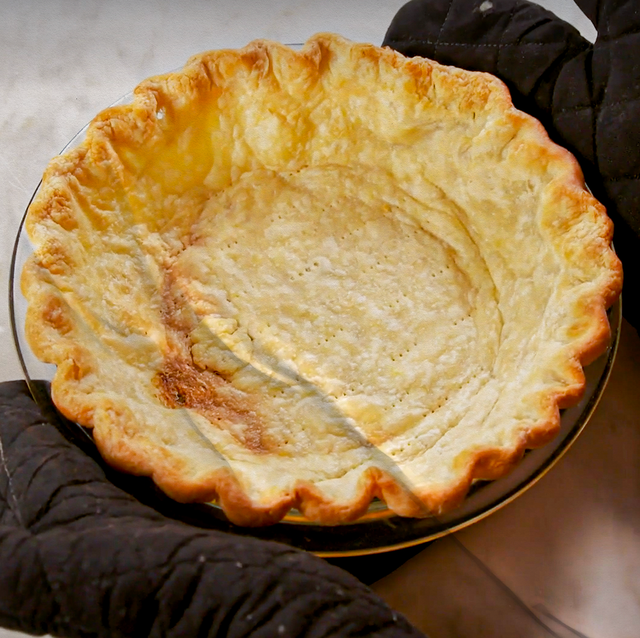If you're intimidated by making pie crust from scratch, we feel you. Pies can be tricky and take on a mind of their own. Which is exactly why we've rounded up our best tips for pie perfection every time.
1. Practice makes perfect.
"The more you try to make a pie crust, you begin to learn intuitively what works and what doesn't," says Maya Camille Broussard, of Netflix's show Bake Squad and founder of Justice of the Pies. "It could be that you didn't put enough water in your crust and it's falling apart. It could be that you put too much water in and now it's too elastic. It could be that you activated the gluten too much and now you just need to wrap it back up and throw it in the fridge to rest."
2. Keep your butter chunks large.
Simple rule: The bigger your butter chunks, the flakier your crust. Follow Makinze's method for perfectly sized butter every time: "I cut the butter into 1/2" cubes, then put them in my palm and rub my palm over it, drop it back into the flour, and toss." She says you want to aim for butter pieces that are the size of a walnut half.
3. Chill the dough AT EVERY STEP.
We're gonna need you to take this step seriously: Cold dough will produce a flakier pie crust. Period. Repeat after us: You will not put dough that's warmed up after working it to fit nicely in your pie dish directly into the oven to blind bake. You need to chill your dough after every step. Chill the dough before rolling it out, after placing it in your pan, after you fill it.
Cold dough will make sure to hold your crimp designs. If it's not cold, it's gonna the blast of the oven heat and lose its structure as it will instantly melt the butter, versus allowing the cold butter to slowly steam and rise up to create beautiful layers.
4. Skip the thin crust.
"I made this mistake for many years before realizing why my crimped and decorative edge was falling short: the crust wasn't thick enough!" says Makinze, who explains that a too-thin crust will burn or crisp. "Always roll it out so that you have a double layer of crust that you can tuck under." Bonus: This means you can skip using foil as shield because the thicker crust won't burn as quickly.
5. Blind baking is super helpful.
even if your recipe doesn't call for pre-baking the crust without filling, you should probably do it anyways to make sure you create a sturdy bottom and ensure that when you pull out your slice you don't have a soggy bottom. double crust pie wouldn't follow this.
6. Bake the crust until golden...and then give it 10 more minutes.
Just like bigger butter means flakier crust, a more deeply baked crust means better flakes, too. Don't be afraid of your crust taking on some serious color. You're looking for brown, not golden. "If you think it's golden enough, keep it in for 10 more minutes," Makinze recommends. "Think about the bottom crust. If the part that's exposed in the oven only got golden, the bottom is likely under-baked crust, which means it can be soft with a little bit of chew."
7. Bake it on a sheet pan.
The most simple (and genius) tip here: Place your pie plate on a sheet pan when baking so you don't have to worry about futzing with the crust with oven mitts.
8. OK, traditional pie crust too intimidating? Make a short crust.
You'll recognize this from key lime and lemon bars. The difference between this crust and a classic crust is that the butter is melted, so you form it with your hands, rather than roll it out. You can't mess it up!
Lindsay Funston is the former Executive Editor at Delish, where she managed all food, culture, video and social content. She had worn many hats at the brand over the years: traveling the country in pursuit of pickles, creating gravity-defying "cheese pulls", and almost burning down the Delish kitchen with marshmallow cupcakes.

















